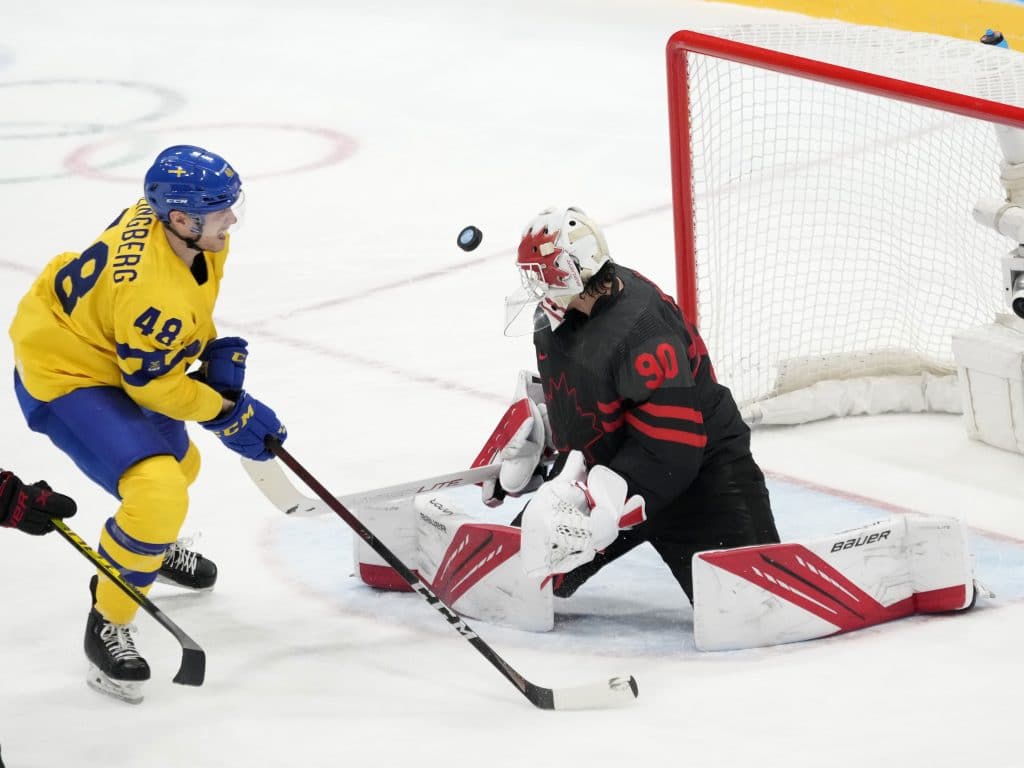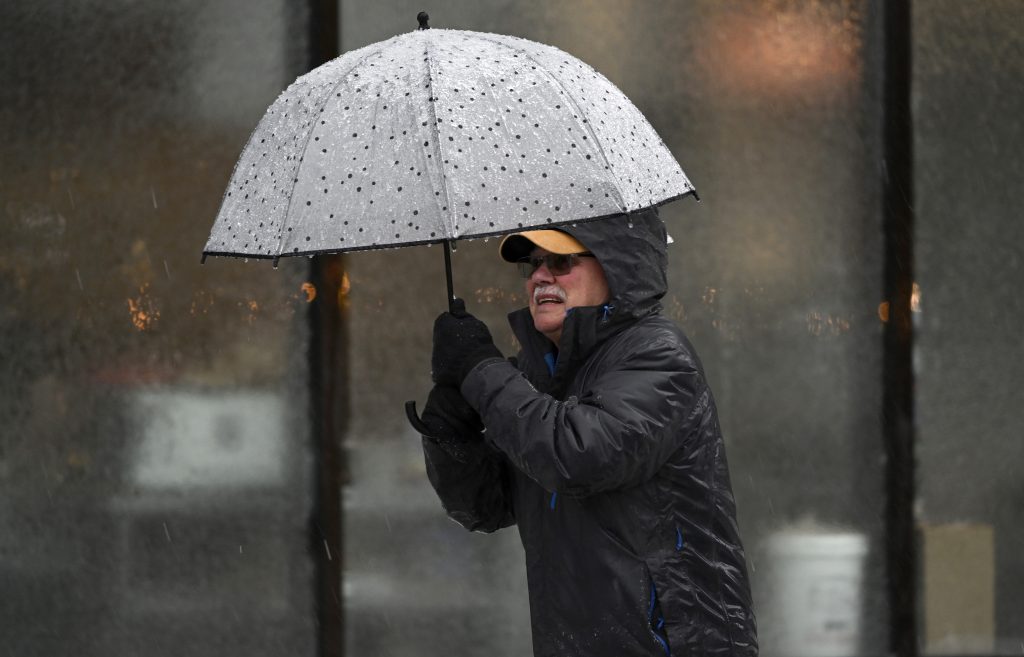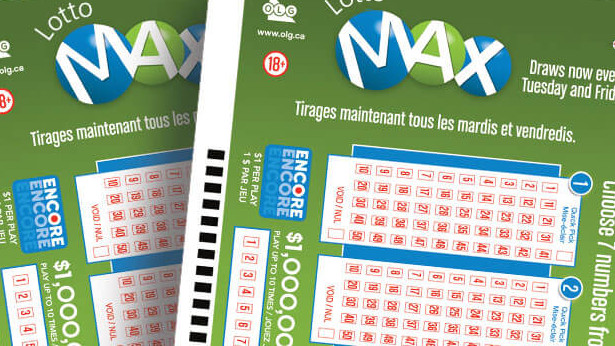Canadian men’s hockey team eliminated by Sweden in Olympic quarterfinals

Posted February 16, 2022 10:51 am.
Last Updated February 16, 2022 1:08 pm.
Canada’s surprisingly effective use of its old-school approach fell just short of success in a heartbreaking 2-0 quarterfinal loss to Sweden at the 2022 Beijing Olympic Winter Games at the National Indoor Stadium on Wednesday.
Sweden now advances to a semifinal to play for a shot at a medal against Russia on Friday.
Here’s what you need to know about the Canada-Sweden quarterfinal game:
Speed not necessarily the ticket
The initial thought after the preliminary round was that Canada was too slow, old and big to be able to play the speed the modern game has thankfully embraced.
And when you think Swedish hockey, you probably think open-ice speed, clean passes and, generally, lots of flow. So, hopes were not high for Canada heading into this game, especially when its efforts in two games against tournament weakling China were not exactly overwhelming.
But we sometimes forget that some of the best grinders in the NHL are from Sweden (see: Patric Hörnqvist). And Sweden – built for this tournament with Canada in mind, oddly, with some skilled players left at home – brought the grind, which, combined with smart positioning and disciplined, aggressive man-on-man coverage, resulted in a very tight matchup in which one mistake would be the difference.
“Biggest thing is they clog up the ice really well,” Canada’s Landon Ferraro said during the second intermission, with the score 0-0.
Canada GM Shane Doan – parachuted into the big gig after the NHLers withdrew – seemingly built his team with his playing days in mind, recruiting lots of size and lots of, uh, experience. Ten years ago, good call. Today, not so much. When Daniel Winnik, a beast of a penalty killer in his prime, is still killing penalties for you when he’s 36, it feels like you’re counting too much on the wayback machine.
Because in this day and age, even on the NHL-size rink the Olympics are held on, there’s a need for speed. There’s a thrill with skill. Against a fast and talented and cocky team like the United States, that’s never a good matchup, as we saw in Canada’s 4-2 loss.
But a funny thing happened on Canada’s way to irrelevance: Meeting a similarly constructed foe used to the bump and grind gave Canada a chance. And, as it turned out, it was the team that could grind the best that came out on top.
Canada got the goaltending it needed
When a goalie is at the top of his game, he knows where the puck is at all times, he wants the shot, he squares up to the puck every time, he tucks himself under the crossbar when the play is at his feet, he’s yelling at guys on the ice, he sweeps his crease during stoppages, he pats his defenceman on the butt with his stick, whatever his twitch is, he’s embracing it. Think Patrick Roy talking to his posts or Braden Holtby watching the water droplets squirt out of his water bottle.
Crucially, Canada’s Matt Tomkins had that going on in the game against Sweden. He wasn’t exactly winking at the Swedes, but it was obvious he was in the zone: rebounds were not kicked out into the slot, he didn’t wince when shots were taken, he didn’t look behind him if a shot missed the net, he aggressively challenged the shooter when the need arose.
And he made a lot of big saves, and can’t be faulted for the result.
Confidence is such an intangible for goalies, no secret there, and it’s always tough to quantify. But you could see it in Tomkins’ game. A likely big reason for that is, as a top goalie in the Swedish Elite League with Frolunda, Tomkins was familiar with at least nine of the Swedes. Goalies are many things, but forgetful when it comes to shooters is not one of them.
Tomkins, who was tested early and often in the elimination game against China, turned aside Sweden time and time again, notably against Anton Lander and Pontus Holmberg with the score at 0-0 in the second.
Swedish goalie Lars Johansson, meanwhile, hadn’t played in a week, but he was equally up to the task even though not as seriously tested.
Line combo confusion
Just before the game, Canada suffered a blow with the news that it would be without high-energy forward Ben Street and minute-muncher defenceman Alex Grant, two fairly significant changes to the lineup. Ferraro came in for his tournament debut, replacing the injured Street on the energy/third line, playing mostly alongside Kent Johnson and Eric O’Dell.
Other changes saw Josh Ho-Sang, who started the tournament on the top line with Mason McTavish and Eric Staal, initially drop all the way down the lineup to be listed as the extra forward. Jack McBain moved into Ho-Sang’s slot to open the game. But Ho-Sang, seemingly getting the message, found himself back on the top line at certain points during the game, even during the power play. In tight games such as this, the most offensively talented players are going to get a shot – or are going to be on the ice when you’re scored against.
These change-on-the-fly line combos would be the norm for Canada throughout the game.
While in the NHL, coach Claude Julien was never one to leave his line combinations for an entire period, let alone an entire game, but his constant tinkering here spoke volumes. Essentially, he wasn’t happy with how Canada looked and made adjustments to improve throughout the game, desperate to spur the offence.
This tinkering seemed to unsettle the Canadians in the third period, as the players were consistently hemmed in their own zone by the aggressive forechecking of Sweden. Getting out of the rhythm led to the goal with the costly turnover in the third and limited Canada to five shots on goal in the final frame.
What’s next
The favoured United States squad was upset 3-2 by Slovakia, who scored late to tie it, in a shootout. Finland will face Slovakia in the semifinals after a 5-1 win over Switzerland.
Russia advanced with a 3-1 win over upstart Denmark, which was playing in its first Olympics. Semifinals go Thursday night and Friday morning.








